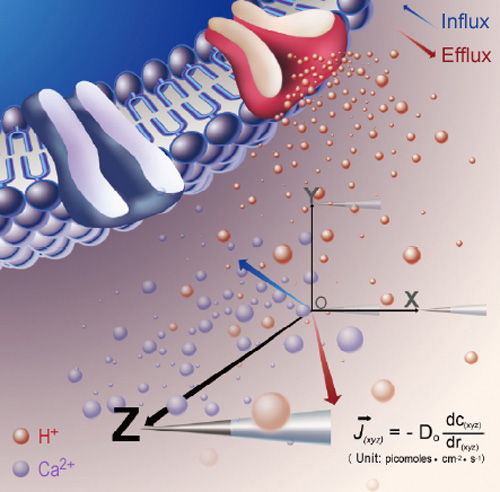
NMT is a fully computerized technology providing fast, convenient, multi-dimensional and real-time measurement to live samples. Without contacting the live sample, NMT's flux sensors measure the concentration, direction, influx, and efflux of select ions and molecules within and surrounding the sample. NMT also has the ability to achieve the simultaneous measurement of two flux sensor types (two different ions or one ion and one molecule).
NMT can detect ionic/molecular fluxes (up to femto(10-15)moles • cm-2 • s-1) in liquid media near the surface of samples such as condensed organelles, single cells, tissues, even small intact organisms.
NMT is also capable of obtaining ionic/molecular fluxes in 3D by measuring the concentration gradient in all x, y, and z directions.
History of NMT
NMT was first launched in 2001. Over 15 years later, the NMT Physiolyzer® is now in its 7th generation. Improvements have been made giving it a higher degree of automation meaning a larger amount of the work is done automatically. This improvement makes it easier for the user to operate the system giving them more time to focus on the science. The NMT Physiolyzer® is customizable, allowing users to choose the exact ions and molecules they want to measure.
How NMT Works
NMT measures the concentration gradient of a specific molecule and/or ion by means of selective/specific flux sensors 'vibrated' (repeatedly moved between measurement points) at a selected distance in the media. The flux sensor records a voltage at each measurement point representing the local concentration of that ion/molecule being measured. The molecular/ionic fluxes are calculated based on the Fick’s law of diffusion:

where J0 is the ion flux in the x direction, dc/dx is its concentration gradient, and D is its diffusion constant. The direction of the flux is derived from Fick’s law of diffusion that relates the concentration gradient to the diffusion coefficient.
